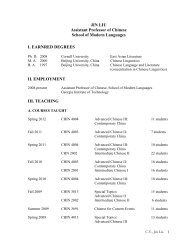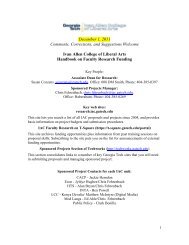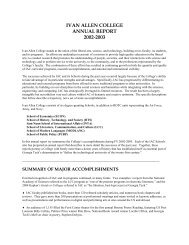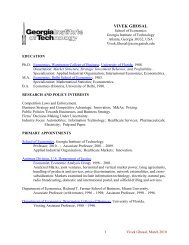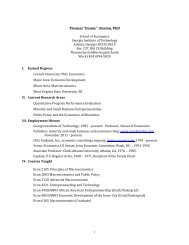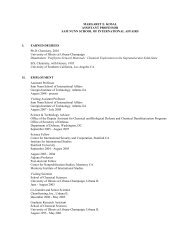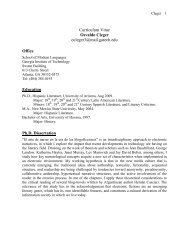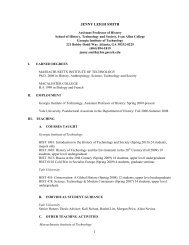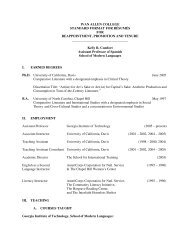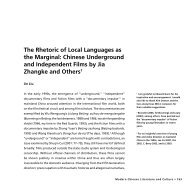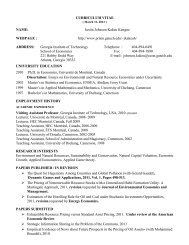Atlanta Housing - Georgia Institute of Technology
Atlanta Housing - Georgia Institute of Technology
Atlanta Housing - Georgia Institute of Technology
Create successful ePaper yourself
Turn your PDF publications into a flip-book with our unique Google optimized e-Paper software.
d. Examined the impact <strong>of</strong> the work/compliance requirements on employment and<br />
earnings.<br />
e. Linked family records longitudinally between 2004 — 2010. Use GIS s<strong>of</strong>tware to<br />
geocode the addresses <strong>of</strong> families and to overly measures <strong>of</strong> community<br />
characteristics to census tracts. Spatially examined the characteristics <strong>of</strong><br />
neighborhoods where Grady and University families lived in 2004. Compared the<br />
characteristics <strong>of</strong> neighborhoods where families lived in 2004 the characteristics <strong>of</strong><br />
neighborhoods where they relocated by 2010. Used the CAI (Community Attribute<br />
Index) to spatially examine neighborhood quality. The CAI is a multidimensional<br />
index that measures community characteristics. It is analogous in design and<br />
application to the United Nations Development Program (UNDP) Human<br />
Development Index (HDI). The HDI is a composite score derived for each country by<br />
averaging separate index measures <strong>of</strong> the country’s population. The measures<br />
include life expectancy at birth, per capita household income, and educational<br />
attainment. Each index value is rescaled so that its ranges from 0 — 1, where 1<br />
represents higher attainment <strong>of</strong> the human potential. Analogously, the CAI is a<br />
multidimensional index that is based on 16 separate index measures <strong>of</strong> community<br />
characteristics at the census tract level. The value <strong>of</strong> each index ranges from 0 — 1<br />
and the average value <strong>of</strong> the 16 indexes is the CAI. Principal Component Analysis<br />
was used to reduce dozens <strong>of</strong> community measures to the 16 most essential ones<br />
that help define the characteristics <strong>of</strong> neighborhoods. Some <strong>of</strong> the index measures<br />
included in the CAI are the average price <strong>of</strong> a single-family home in the<br />
neighborhood, the national percentile ranking <strong>of</strong> elementary schools on<br />
standardized tests (where the school attendance zone is overlaid to a census tract),<br />
the rate <strong>of</strong> violent crime in the neighborhood (where the address <strong>of</strong> the crime<br />
incident is overlaid to a census tract), median family income (from 2005 midterm<br />
census estimates), educational attainment <strong>of</strong> the population, etc. This procedure<br />
allowed a CAI score to be developed for every census tract in the <strong>Atlanta</strong><br />
Metropolitan Area. More importantly, because the CAI score and the address <strong>of</strong> a<br />
public housing family are assigned to census tract, the procedure allowed a<br />
measurement to be taken <strong>of</strong> the difference in neighborhood quality between origin<br />
and destination neighborhoods.<br />
f. Determine whether families, who relocated to better neighborhoods, experienced<br />
statistically significant gains in self-sufficiency in comparison to families who lived in<br />
less selective neighborhoods. Descriptive statistics and Linear Mixed Models with<br />
38 | P a g e



